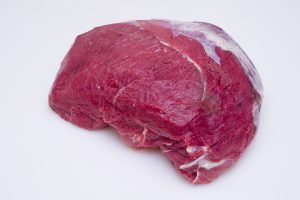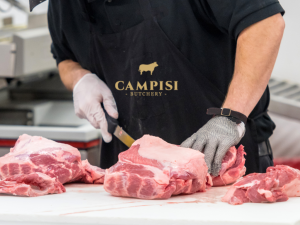Free-range butchers offer a diverse selection of meats, catering to a wide range of culinary preferences. Their range typically includes beef, pork, poultry, and lamb, all sourced from animals that have been raised in natural, open environments. Unlike conventional meat, free-range options are known for their superior quality, owing to the animals’ healthier lifestyles and diets. These butchers often provide a broader spectrum of choices, including less common meats like venison or bison, appealing to adventurous eaters and those seeking variety in their diet.
The Distinction of Free-Range Meat Quality and Taste
The quality and taste of free-range meat are distinct and superior in several ways. Free-range animals, allowed to roam and graze naturally, develop more robust and complex flavors in their meat. Their diets, free from artificial feeds, contribute to a richer taste profile and improved meat texture. Consumers often report that free-range meat tastes fresher and more ‘authentic’ than its conventionally farmed counterparts. Additionally, the ethical and environmentally friendly rearing practices add an intangible value to the overall eating experience.
Popular Cuts from Free-Range Butchers

Description of Common Cuts Available from Beef, Pork, Poultry, and Lamb
Free-range butchers provide a variety of cuts that cater to different cooking methods and dishes:
- Beef: Popular cuts include ribeye, sirloin, and tenderloin, known for their tenderness and flavor. Ground beef for burgers or mince is also widely available.
- Pork: Choices range from pork chops and tenderloin to belly, ideal for slow-roasting or grilling.
- Poultry: Beyond the whole chicken, cuts like breast, thigh, and wings are offered, suitable for a range of recipes from grilling to baking.
- Lamb: Cuts like lamb chops, leg of lamb, and shank are renowned for their rich flavor and are perfect for roasting or slow-cooking.
Tips on Selecting the Best Cuts for Various Culinary Uses
When selecting cuts, consider the cooking method and the desired flavor profile. For quick cooking methods like grilling or pan-frying, opt for tender cuts such as sirloin or chicken breast. For slow-cooking methods like braising or stewing, choose cuts with more connective tissue, such as beef brisket or lamb shank, which become tender and flavorful over time.
Specialty Products and Delicacies
Exploring Unique Offerings: Aged Meats, Organic Sausages, and More
Free-range butchers often offer specialty products that are hard to find elsewhere. Aged meats, where the aging process enhances flavor and tenderness, are a delicacy for meat connoisseurs. Organic sausages, made from free-range meat and natural ingredients, provide a healthier and tastier alternative to conventional sausages. Other offerings might include specialty game meats, smoked meats, and artisanal charcuterie, offering a gourmet experience.
The Appeal of Specialty Products for Gourmet Cooking
These specialty products appeal significantly to gourmet cooks and food enthusiasts. They offer unique flavors and textures that can elevate ordinary dishes to extraordinary culinary creations. Using these products also supports sustainable and ethical farming practices, adding a layer of responsibility and mindfulness to the cooking experience. For those passionate about cooking, these specialty items provide an opportunity to explore and experiment with new, high-quality ingredients.
Understanding the Pricing of Free-Range Products
Factors Influencing the Cost of Free-Range Meats and Products
The pricing of free-range meats is often higher than that of conventional meat products, influenced by several factors. Firstly, free-range farming practices are generally more labor-intensive and costly, as they require larger spaces for animal grazing and natural feeding patterns. The feed for free-range animals is often of higher quality and cost, as it is free from artificial additives. Additionally, the adherence to higher welfare standards, including more humane living conditions and slaughtering processes, also contributes to the increased cost. The limited production scale of free-range farming compared to industrialized methods also plays a role in the pricing.
Cost Comparison with Conventional Meat Products
When comparing the cost of free-range meats to conventional meats, it’s noticeable that free-range products are priced higher. This is due to the aforementioned factors and the fact that free-range farming yields less meat per animal than intensive farming methods. However, the price difference is often justified by the superior quality and ethical assurances that free-range meat provides.
Benefits of Purchasing from Free-Range Butchers
Nutritional and Flavor Advantages of Free-Range Meat
Free-range meats are known for their enhanced nutritional value and flavor. Animals raised in free-range environments typically have a more natural diet, leading to meat that is often leaner, contains a higher proportion of beneficial fats like omega-3 fatty acids, and is richer in vitamins and minerals. The natural lifestyle of the animals also contributes to a more developed muscle structure, resulting in meat that is tastier and has a more desirable texture.
Supporting Sustainable and Ethical Farming Practices
Purchasing meat from also means supporting sustainable and ethical farming practices. Free-range farming is generally more environmentally friendly, as it avoids the overuse of antibiotics and hormones and promotes biodiversity. Ethical considerations are also at the forefront, as these farms provide better living conditions for the animals, ensuring they have sufficient space, access to outdoors, and a natural diet.
Guidance for Storing and Preserving Free-Range Meat

Best Practices for Storing Different Types of Free-Range Meats
Proper storage is crucial for maintaining the quality and safety of free-range meats. In the refrigerator, meat should be stored at temperatures below 5°C and used within a few days of purchase. It’s recommended to store meat in the coldest part of the fridge, typically at the bottom, and in airtight containers to prevent cross-contamination and maintain freshness.
Tips on Freezing, Curing, and Aging at Home
For longer-term storage, freezing is an effective option. Free-range meats can be frozen for several months without significant loss of quality. It’s advisable to wrap the meat tightly in freezer-safe materials to prevent freezer burn. For those interested in traditional methods, curing and aging meat at home can be a rewarding process. This involves using salt, nitrates, or sugar to preserve the meat and enhance its flavors. However, it requires careful control of environmental conditions and a good understanding of food safety practices.
Pairing Free-Range Meats with Other Ingredients
Recommendations for Complementary Flavors and Ingredients
Pairing free-range meats with the right ingredients can enhance their natural flavors and create delightful culinary experiences. For beef, herbs like rosemary and thyme, and robust spices like black pepper and garlic, complement its rich flavor. Pork pairs well with sweeter elements like apple or honey, and aromatic herbs such as sage. Poultry benefits from a wide range of flavors, from classic herbs like parsley and tarragon to citrusy notes. Lamb, with its distinct taste, goes well with mint, cumin, and garlic. When choosing vegetables, root vegetables and greens like spinach or asparagus make excellent sides for most meats.
Suggestions for Creating Balanced and Nutritious Meals
Creating balanced meals with free-range meats involves combining them with a variety of other food groups. Incorporating whole grains like quinoa, brown rice, or barley can add texture and nutrition. Fresh vegetables, either steamed, roasted, or in salads, provide essential vitamins and fiber. Legumes and beans are great additions for extra protein and heartiness. For a well-rounded meal, consider the portion sizes, aiming for a good balance between proteins, carbohydrates, and vegetables.
Conclusion
Choosing free-range is a step towards a more sustainable and health-conscious lifestyle. It promotes a shift from mass-produced meats to more ethical and environmentally friendly practices. By opting for free-range, consumers play a role in advocating for farming practices that respect animal welfare and the environment. This approach also fosters a deeper appreciation for food quality, encouraging healthier eating habits and a more mindful relationship with what we eat. In the bigger picture, embracing the free-range lifestyle is about making choices that are beneficial for both individuals and the planet.















